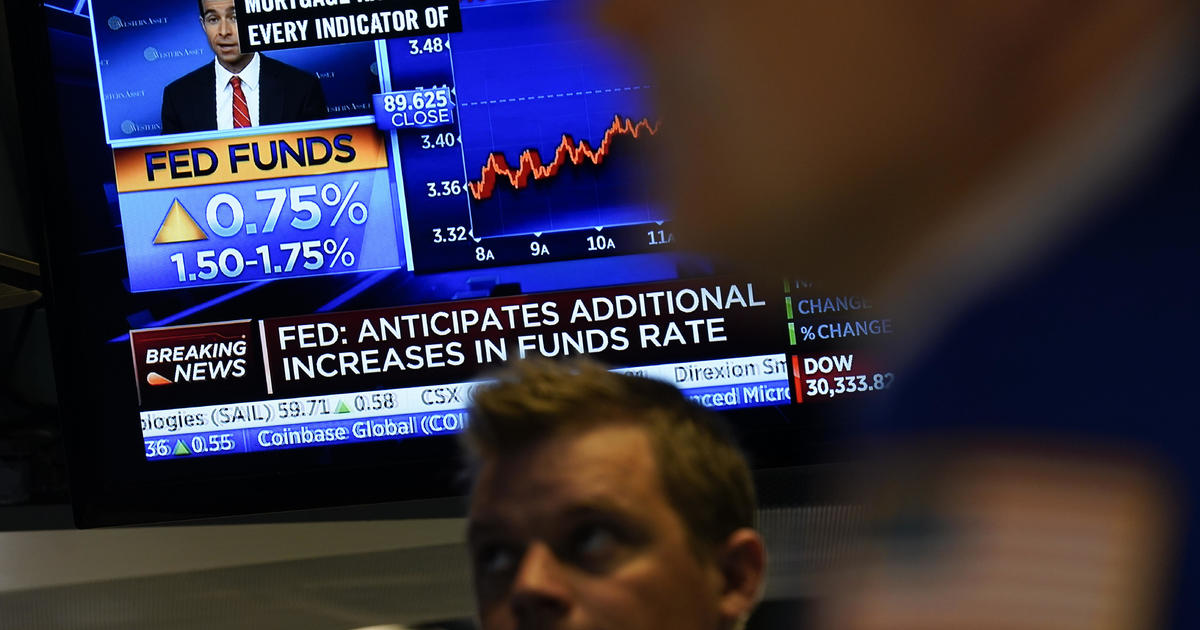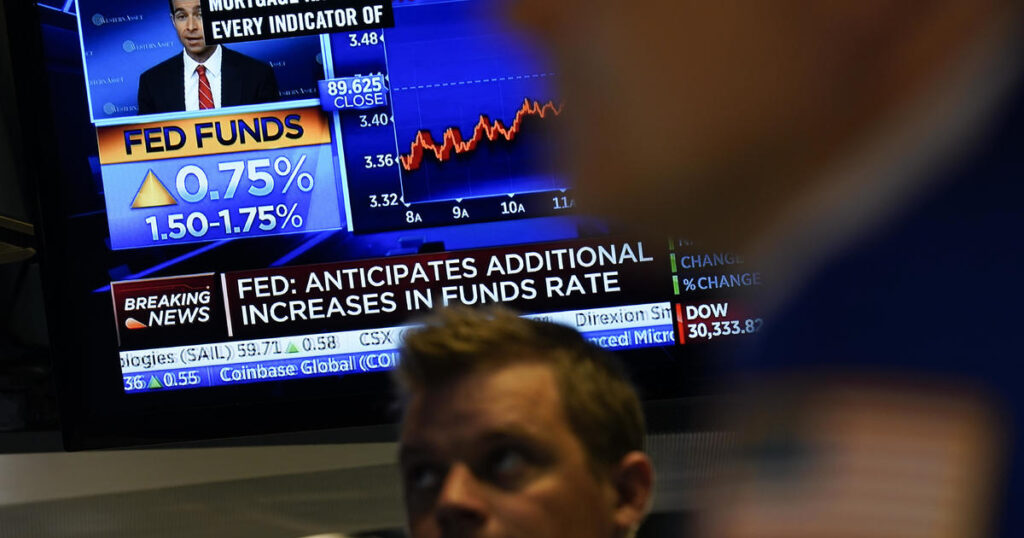 The U.S.economy shrank between April and June of this year, marking the second consecutive quarter of declining economic activity — a sign the U.S.may be teetering on the edge of a recession.
The U.S.economy shrank between April and June of this year, marking the second consecutive quarter of declining economic activity — a sign the U.S.may be teetering on the edge of a recession.
The nation’s gross domestic product, a measure of total spending on goods and services across the economy, fell at an annual rate of 0.9%, the Commerce Department said Thursday.
The contraction follows a 1.6% decline in economic activity in the first three months of the year and means the U.S.could currently be in a recession, which is broadly defined as two straight quarters of negative growth.
The hottest inflation in 40 years is crimping household budgets, with some consumers struggling to cover basics such as gasoline, food and rent, which have sharply risen in price from a year ago.
At the same time, the Federal Reserve on Wednesday raised interest rates for the fourth time this year in an effort to dampen inflation.But that is also making it more expensive for consumers and businesses to borrow for big purchases like homes and cars.
“[T]he reported weakening in domestic demand confirms the economy is rapidly downshifting amid stubbornly high inflation and aggressive Fed tightening,” wrote Lydia Boussour, lead U.S.economist at Oxford Economics, in a research note.
In the second quarter, GDP was impacted by decreases in investment in private inventory, residential fixed investment and government spending.Americans held off on purchases, reducing spending at retailers as well as car dealers, the Commerce Department said.
Boussour added, “While we continue to see a pathway to a softish landing, it’s admittedly narrowing.”
Job market remains sturdy The economy is showing signs of strength in other areas, such as job growth, which makes it harder to assess whether the nation has slipped into a recession, economists said.
“The 0.9% annualized fall in GDP in the second quarter is disappointing but doesn’t mean the economy is in recession,” Andrew Hunter, senior U.S.
economist with Capital Economics, said in a report.
“The decline was partly due to a huge drag from inventories, while most other coincident indicators, particularly employment, show continued expansion.”
One common measure of whether a recession has started is if economic growth declines for least two straight quarters.But that’s not the full definition used by the group that makes the official call on whether the U.S.has slipped into a recession, noted David Kelly, chief global strategist at J.P.Morgan Asset Management.
The National Bureau of Economic Research has “been the unofficial scorekeepers of U.S.
recessions,” he said in a report.”Their definition is a broader one and includes declines in employment which clearly have not occurred so far this year.”
But, he added, “Today’s report is further evidence that the U.S.economy is quickly losing momentum and increases the likelihood that even the broadest definition of recession will be met before the end of the year.”
The U.S.is facing ongoing headwinds as inflation remains high and the fallout from Russia’s war in Ukraine threatens to depress economic growth for the rest of the year.
The Fed’s series of rate hikes are expected to help lower inflation, but the sharp increases risk snuffing out growth and destabilizing the job market as businesses cut back on hiring.
The number of Americans filing for jobless claims was 256,000, a decline of 5,000 from the prior week, the Labor Department said on Thursday.While claims remain low, they have been climbing for several weeks and signal “a shift in labor market conditions,” High Frequency Economics said Thursday in a report.
“Overall, rapid rate hikes — aimed at not only lowering inflation but also rebalancing supply and demand for workers — are bound to result in a softening in labor market conditions and a further rise in layoffs over coming months,” the research firm said.
Gas prices have been falling since hitting a record high in June, which should ease the pressure on motorists, economists note.But households and businesses will still be coping with higher costs of borrowing due to the Fed rate hikes.
“While falling energy prices and a more general easing of inflation should give real incomes a boost over the coming months, we expect consumption growth to remain subdued,” Hunter said.
Trending News 9 Mega Millions tickets were a Mega Ball short of winning it all U.S.Bank opened fake accounts for unsuspecting clients Saudi prince stays in “world’s most expensive home” during Paris trip How Senate Dems’ surprise spending plan could impact your taxes What the Fed’s latest interest-rate hike means for your money.
